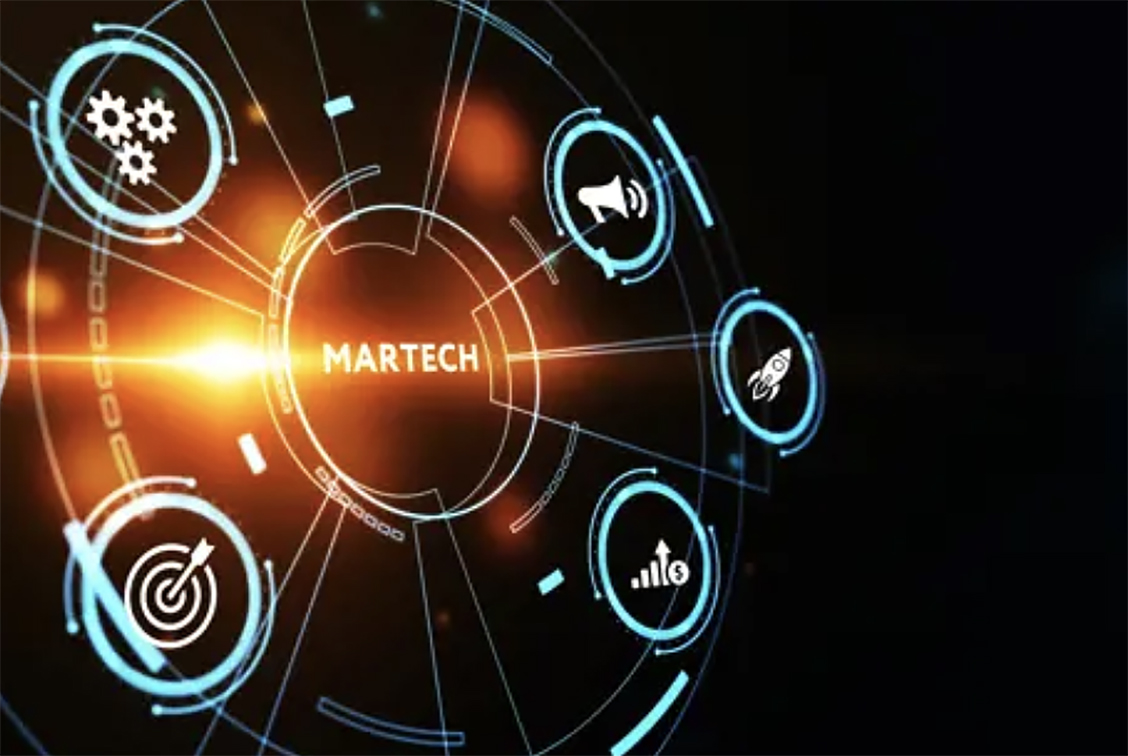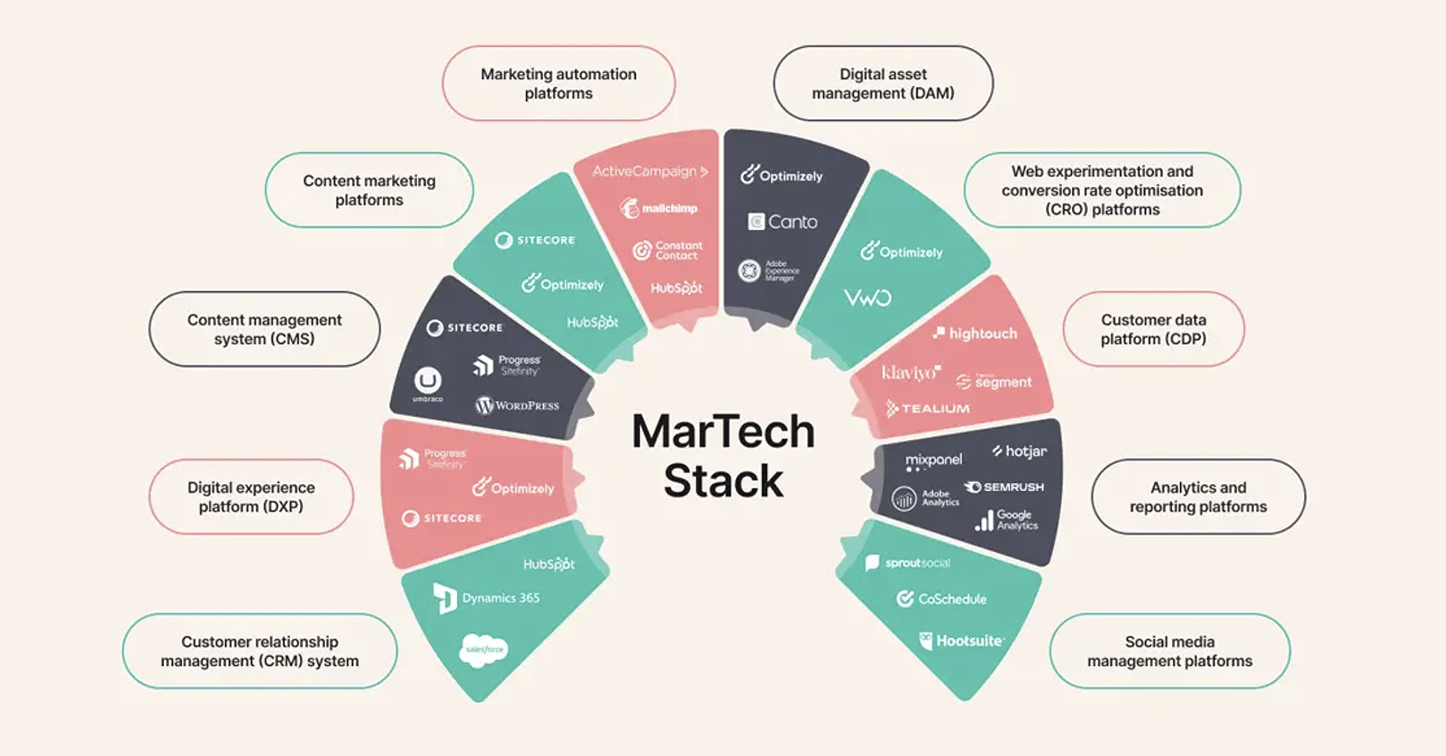equ’s Scott Forrest: Communicating martech decisions to non-technical stakeholders

Scott Forrest, equ’s Head of Digital Marketing, on why martech matters now more than ever.
A well-structured marketing technology (martech) stack has become essential for businesses aiming to enhance customer engagement, streamline operations, and drive sustainable growth. However, securing stakeholder buy-in for martech investments is increasingly challenging. According to Gartner’s latest CMO Survey, marketing budgets have shrunk by 15% over the past 12 months, and martech’s share within those budgets has declined from 29.2% in 2018 to just 23.8% today.
Adding to this challenge, martech utilisation rates have also dropped to just 33%. This low rate indicates that many tools remain underused or lack effective integration into broader business strategies, which can undermine the value of martech investments.
Low utilisation often reflects issues with adoption, training, or an overly complex stack, and points to a need for clear, strategic alignment across teams. It’s a reminder that without strong internal engagement and purposeful integration, martech investments may fail to deliver their full potential impact.
Meanwhile, the martech landscape is expanding rapidly, now encompassing over 14,000 products – a 28% increase from last year, largely due to the influx of AI-driven tools. While this variety offers new possibilities, it also introduces complexity, particularly for enterprises where martech stacks may include 20 or more interconnected tools. A well-defined, strategically communicated approach is essential to ensure martech investments deliver value and are used to their full potential.
Building a martech stack that meets strategic goals
A martech stack is not simply a collection of tools—it’s an integrated system that supports a range of business activities to create a seamless customer experience. Key components may include customer relationship management (CRM) systems, digital experience platforms (DXPs), customer data platforms (CDPs), content management systems (CMS), and more. Each tool serves a unique purpose, but together they create a unified, data-driven framework that empowers both marketing and operational teams.
For example, a DXP like Optimizely One can power digital experiences across the entire customer lifecycle, enabling collaboration across marketing, content, and analytics teams. Other tools, such as a robust headless CMS like Sitefinity, enable cohesive brand experiences across websites, mobile apps, and internal platforms.
However, with the martech landscape expanding to over 14,000 available tools, crafting a stack that aligns with business goals, remains adaptable, and delivers measurable value is increasingly complex. Global martech spending is projected to reach $148 billion in 2024, underscoring the scale of investment and the importance of a cohesive, purpose-driven approach.

How to bring stakeholders on the martech journey
Securing buy-in for martech requires strategic communication that aligns with each stakeholder’s perspective, addressing their unique concerns and priorities. Here’s how to ensure your martech decisions resonate with a broad audience:
1. Address core concerns early
Non-technical stakeholders often focus on practical considerations when evaluating martech investments. Anticipating these concerns can foster trust and promote alignment from the outset.
• Cost – provide a clear breakdown of initial investment, ongoing maintenance, and projected ROI. With global martech spending at an all-time high, helping stakeholders understand the financial commitment and long-term gains is essential.
• Compatibility – explain how the tools integrate with existing systems and support future expansions to avoid “tech debt”.
• Scalability – demonstrate how the martech stack can evolve with the business, supporting future phases and strategic growth goals.
• Adoption – highlight any necessary training or change management to ensure a smooth transition and high utilisation rates.
By addressing these concerns early on, you create a foundation of trust and clarify how martech aligns with broader organisational objectives.
2. Translate martech’s value for each audience
Different stakeholders view martech through their own lenses. Tailoring communication to these specific priorities can make a compelling case for investment.
• For executives – emphasise ROI, efficiency, and revenue growth. Data shows that 68% of CMOs expect their martech spending to increase, reflecting martech’s recognised potential to drive results.
• For marketing leaders – focus on martech’s role in enhancing customer experience and retention through tools that enable personalised, scalable engagement.
• For IT and operations – address concerns around compatibility, security, and maintenance, especially as martech becomes more data-centric and regulatory compliance is prioritised
This approach keeps discussions focused on each group’s needs, fostering a shared understanding of martech’s potential impact across the organisation.
3. Foster a collaborative process
Collaboration is essential for creating genuine buy-in and ensuring the martech stack aligns with operational and business needs. Including stakeholders in planning and implementation processes builds ownership and accountability.
• Encourage input at every stage – involving stakeholders from the start enables them to shape the strategy and influence tool selection.
• Leverage external expertise – martech vendors and consultants can provide insights that bridge technical details and strategic goals, helping non-technical stakeholders understand the broader value of martech investments.
These practices not only strengthen engagement but also keep the project aligned with evolving needs and industry best practices.
4. Outline a realistic roadmap
Martech projects often unfold over multiple phases, spanning months or even years. A phased roadmap with clear milestones allows stakeholders to see the path from investment to impact.
• Foundation phase – establish core functionalities and integrate essential tools, setting the stage for scalable growth.
• Growth phase – expand capabilities to support additional use cases or evolving business needs, such as personalisation, automation, or analytics.
• Optimisation phase – refine and enhance the martech stack based on performance data, feedback, and changing customer expectations.
This roadmap provides stakeholders with a clear view of how martech will deliver value at each stage, reducing uncertainty and promoting alignment with long-term objectives.

Continuous improvement – making martech a living strategy
Once implemented, martech should be treated as a dynamic, evolving system that adapts to shifts in customer behaviour, technological advancements, and regulatory requirements. Continuous updates to stakeholders and a culture of improvement keep martech relevant and aligned with business goals.
• Ongoing communication – schedule regular updates to discuss new features, evolving needs, and industry changes, translating technical progress into business-relevant terms.
• Accessible documentation – maintain clear, organised records of decisions, use cases, and challenges to create a valuable reference for future adjustments.
• Embrace feedback – as end-users become more comfortable with the tools, their insights can drive improvements, helping to maintain high utilisation rates and reducing the risk of underused “shelfware.”
With martech utilisation rates down to 33%, fostering engagement and feedback post-implementation is crucial. This commitment to continuous improvement ensures the stack remains efficient, effective, and aligned with evolving business requirements.
Partner with equ for martech success
In today’s complex martech landscape, having an experienced partner can make all the difference. At equ, we guide organisations through martech’s complexities – from initial planning and tool selection to implementation and continuous optimisation. Our focus is always on aligning technology investments with your business objectives and delivering measurable, sustainable outcomes.
With a straightforward, tech-agnostic approach grounded in industry best practices, we help you make martech decisions that empower teams, enhance customer engagement, and support long-term growth.
